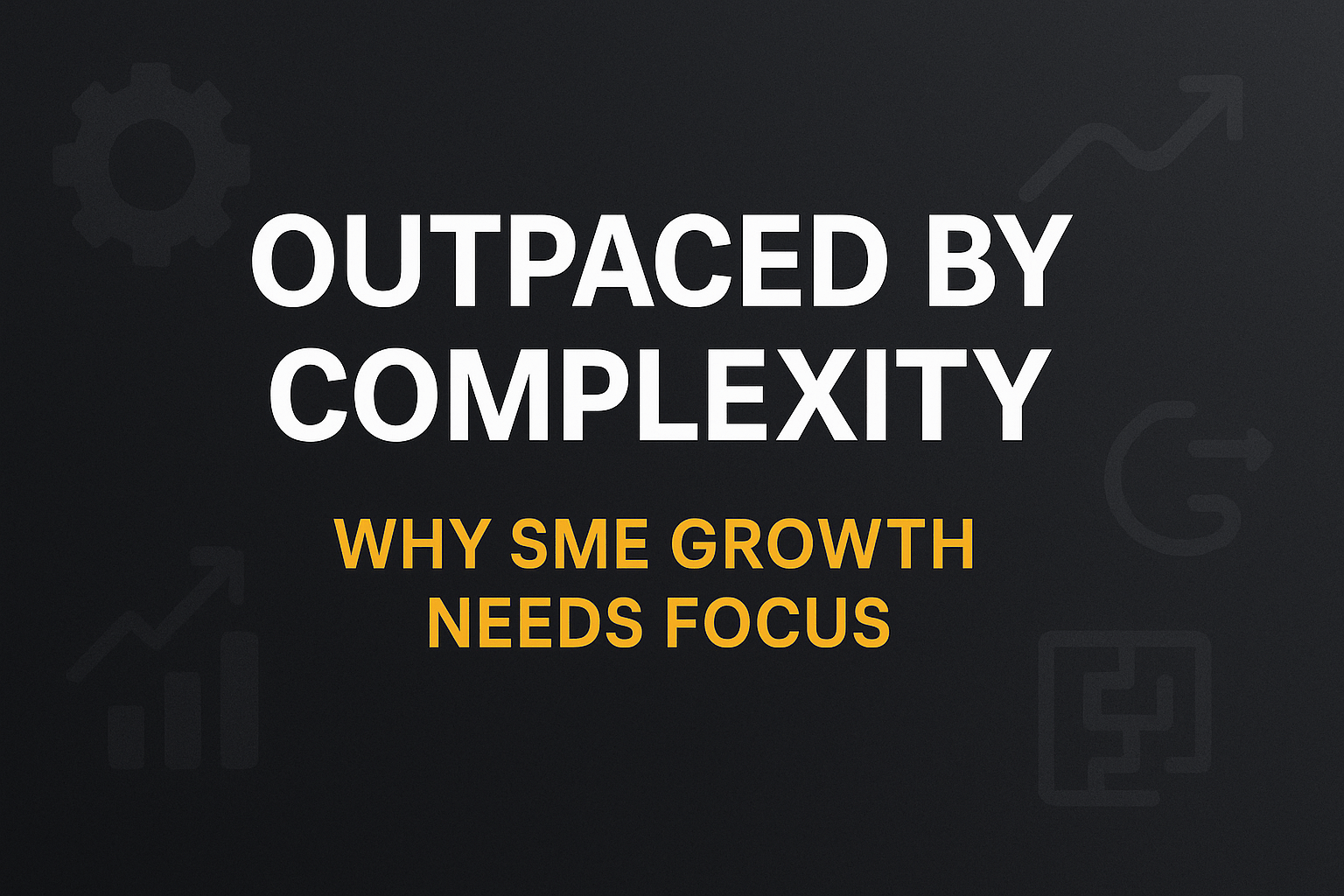SMEs are under pressure to keep up with digital change. Every week brings a new tool, channel, or “must-have” feature. The result? Stacks grow, costs rise, and teams drown in complexity.
Here’s the hard truth: growth doesn’t come from more tech. It comes from focus.
The Myth of “More Tech = More Growth”
What most SMEs do
They bolt on every new platform — chatbots, personalisation engines, martech integrations — hoping that more tools equal more performance.
Why this fails
- Stack sprawl: Overlapping tools drive cost without incremental value.
- Complex workflows: Teams waste time maintaining systems instead of serving customers.
- Shiny object syndrome: Leadership chases trends while core growth levers stall.
As Confidence IT highlights in its SME challenges report, chasing digital complexity without strategy is one of the biggest risks to sustainable growth.
The Power of Strategic Focus
High-performing SMEs take the opposite path: they simplify.
- Core before more: Nail analytics, trading discipline, and customer experience before layering new tech.
- One growth bet at a time: Sequence priorities — SEO, CRO, lifecycle CRM — instead of diluting attention.
- Budget discipline: Reinvest saved costs from unused tools into proven revenue drivers.
Related reading: Fractional eCommerce Leadership: What It Is and Why Growing Brands Need It.
Framework: Cutting Through the Noise
Use this 4-step lens to bring clarity:
- Audit the stack: Map tools and flag overlap.
- Tie to P&L: Kill any system not linked to revenue or efficiency.
- Prioritise growth levers: Focus on one to three initiatives per quarter.
- Embed rituals: Weekly reviews on progress, blockers, and outcomes.
Simplicity isn’t slow. It’s scalable.
Case Example: Focus vs Sprawl
- Brand A: Adopted five different tools for email, retention, and attribution. Costs rose 40%, but revenue flatlined as teams struggled to keep up.
- Brand B: Consolidated into one CRM and prioritised lifecycle flows. Within three months, repeat purchase revenue rose 28% with fewer tools and less cost.
FAQ
- How do I know complexity is the blocker to growth?
- Look for slow decisions, conflicting priorities, and lots of “just ship it” workarounds. If campaigns take weeks to approve and no one owns outcomes, complexity is the issue.
- What’s the first step to get back in control?
- Set a simple growth rhythm: weekly trading review, one owner per metric, one test per key page. Reduce in-flight work and cut anything not tied to a target.
- Do we need new tools or AI to fix this?
- Not at first. Make current tools useful: GA4 for signals, a shared backlog, and a plain-English scorecard. Add AI or new tooling only when it removes a clear bottleneck.
- What should we measure to prove progress?
- Pick 3: qualified traffic, conversion rate, and cost per acquisition (or cost per lead). Track weekly, not monthly, and tie each action to one metric change.
- How fast will we see impact?
- You’ll feel momentum in 2–4 weeks if you cut scope and ship weekly tests. Meaningful uplifts in 6–12 weeks as the testing cadence compounds.
Conclusion
SMEs aren’t losing to competitors because they lack tools. They’re losing because they’re outpaced by their own complexity. Growth comes from ruthless focus, not stack sprawl.
Want clarity in the chaos? Book a discovery call with Mostly Grey Digital and build a growth strategy that scales with confidence.
Key Takeaways
- More tools don’t equal more growth — focus does.
- Stack sprawl drains cost, time, and customer focus.
- Tie every system to P&L or cut it.
- Prioritise 1–3 growth levers per quarter.
- Focus accelerates, not slows, SME innovation.
